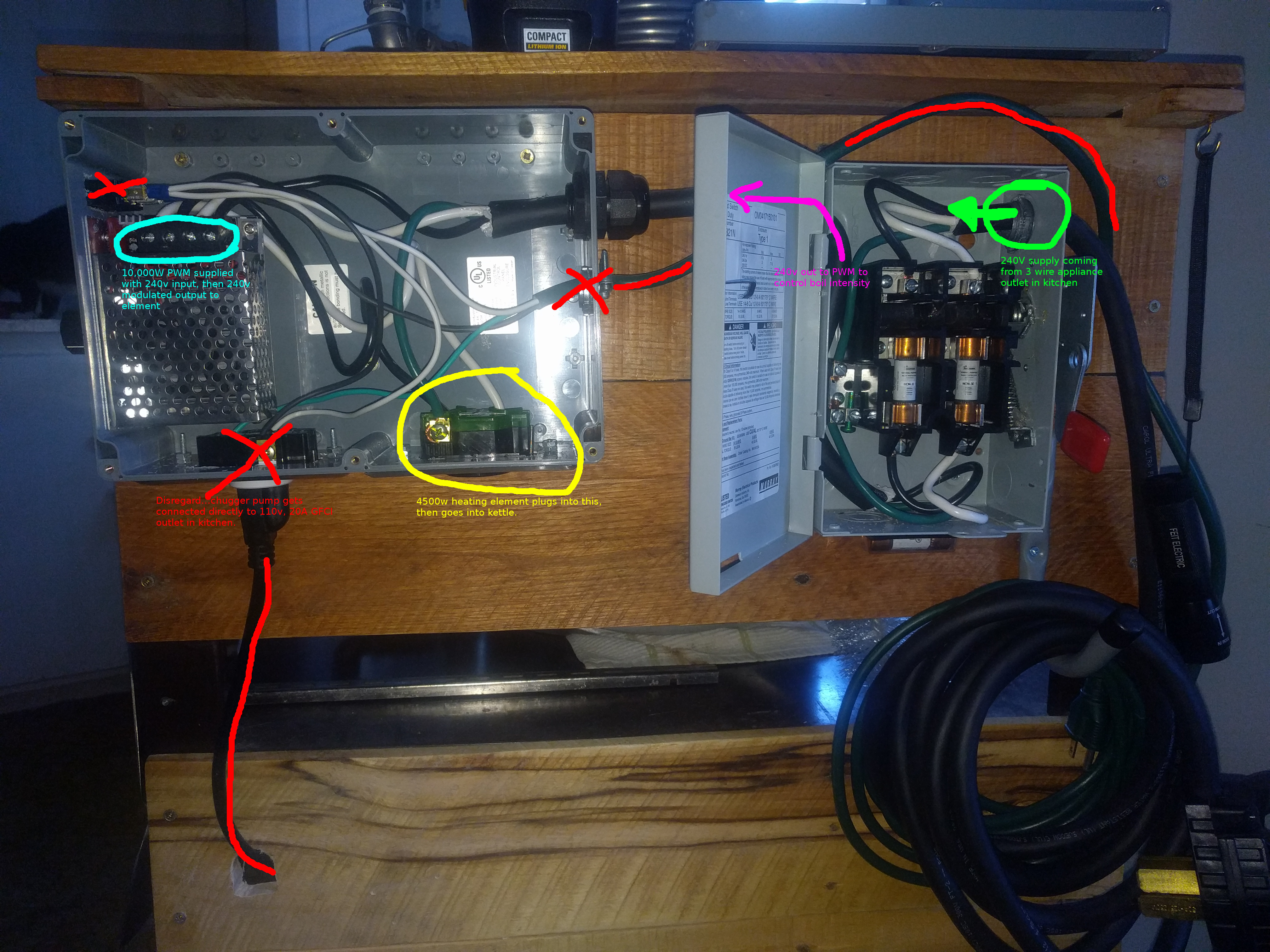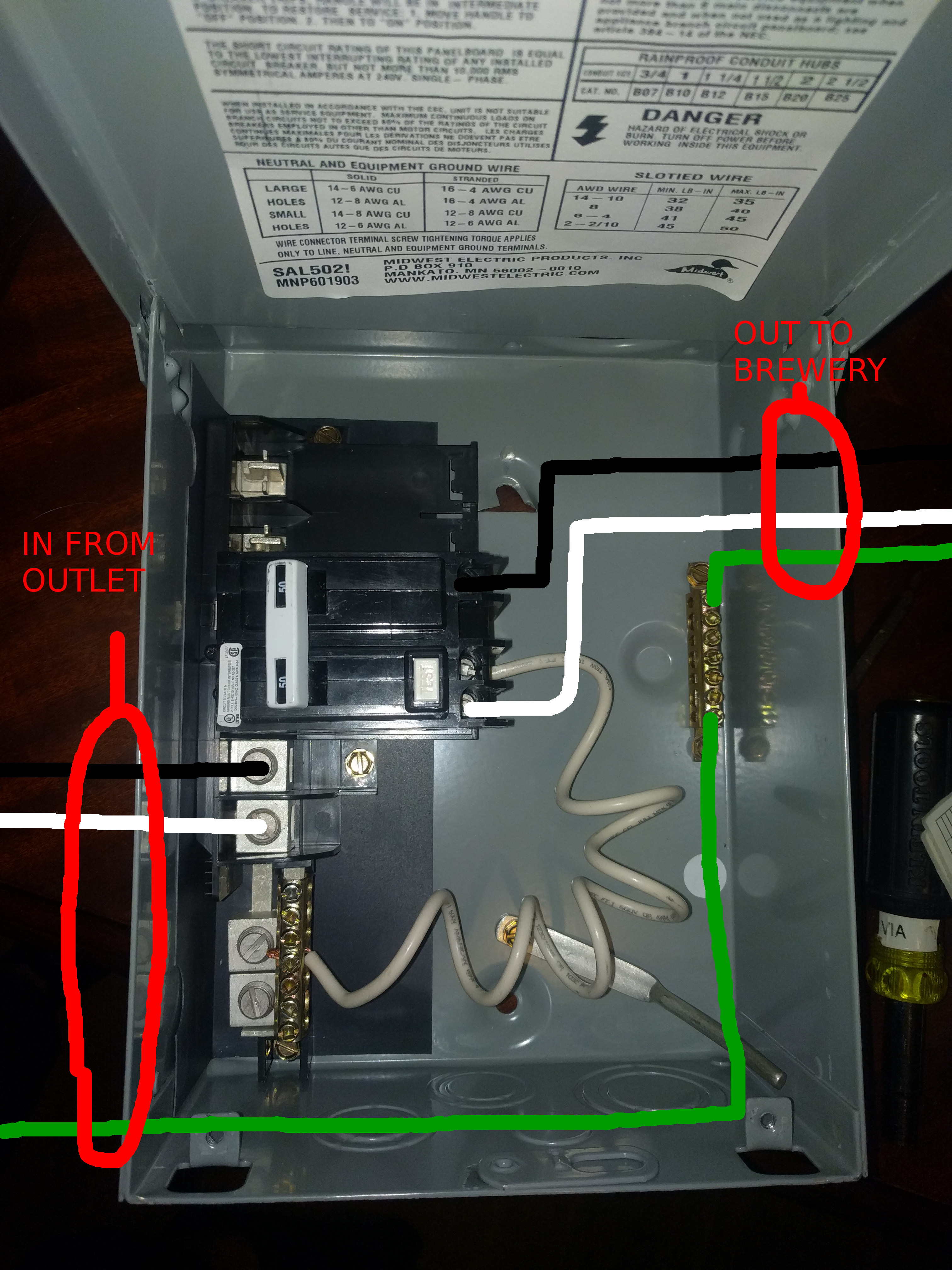I apologize that this question has probably been asked a billion times, but any threads I find seem to turn into huge debates and I get lost in the weeds trying to decipher what's relevant to me and what's not.
Here's my less-than-ideal situation. I live in a 2nd story apartment in which I do NOT have access to any breaker panels. I live in an old building in which the main breaker panel is in the basement, which is not available to me because it is rented out to a business on the first floor. If a wire gets tripped during business hours, I can ask the business to allow me to access to breaker panel to reset the breaker, but if something trips on the weekend I'm pretty much SOL.
My kitchen stove is powered by a 3-prong outlet with a 40A breaker in the basement. My rig is pretty simple...it involves a 2-pole safety switch with 30A fuses coming from the outlet, then going into a 240v 10,000w PWM that simply "dims" the power going to my 4500w element.
I do not need 110v coming out of the spa panel. I have a 110v Chugger pump in my system, but I plug it directly into a 20A GFCI outlet in my kitchen.
As it stands, I simply want to put a spa panel in between the 3 wire appliance outlet and the fused safety switch. I intend to mount the spa panel to my rig...not permanently on the wall. I already have the Midwest 50A GFCI Spa Panel that often is recommended around the forum. ( https://www.homedepot.com/p/Midwest...el-Disconnect-with-GFI-UG412RMW250P/100686230 )
As for the spa panel...I've seen 3-wire input to 4-wire output diagrams, 4-wire input to 4-wire output diagrams, and even 4-wire input to 3-wire output diagrams...but I haven't come across a 3-wire to 3-wire solution. Is this doable, and if so, can someone please help me with a diagram?
Here's my current setup for reference. The system works, but is not currently GFI protected. I want to install the spa panel BEFORE the neon green annotated section:

Any help would be greatly appreciated...thank you!
Here's my less-than-ideal situation. I live in a 2nd story apartment in which I do NOT have access to any breaker panels. I live in an old building in which the main breaker panel is in the basement, which is not available to me because it is rented out to a business on the first floor. If a wire gets tripped during business hours, I can ask the business to allow me to access to breaker panel to reset the breaker, but if something trips on the weekend I'm pretty much SOL.
My kitchen stove is powered by a 3-prong outlet with a 40A breaker in the basement. My rig is pretty simple...it involves a 2-pole safety switch with 30A fuses coming from the outlet, then going into a 240v 10,000w PWM that simply "dims" the power going to my 4500w element.
I do not need 110v coming out of the spa panel. I have a 110v Chugger pump in my system, but I plug it directly into a 20A GFCI outlet in my kitchen.
As it stands, I simply want to put a spa panel in between the 3 wire appliance outlet and the fused safety switch. I intend to mount the spa panel to my rig...not permanently on the wall. I already have the Midwest 50A GFCI Spa Panel that often is recommended around the forum. ( https://www.homedepot.com/p/Midwest...el-Disconnect-with-GFI-UG412RMW250P/100686230 )
As for the spa panel...I've seen 3-wire input to 4-wire output diagrams, 4-wire input to 4-wire output diagrams, and even 4-wire input to 3-wire output diagrams...but I haven't come across a 3-wire to 3-wire solution. Is this doable, and if so, can someone please help me with a diagram?
Here's my current setup for reference. The system works, but is not currently GFI protected. I want to install the spa panel BEFORE the neon green annotated section:

Any help would be greatly appreciated...thank you!
















![Craft A Brew - Safale S-04 Dry Yeast - Fermentis - English Ale Dry Yeast - For English and American Ales and Hard Apple Ciders - Ingredients for Home Brewing - Beer Making Supplies - [1 Pack]](https://m.media-amazon.com/images/I/41fVGNh6JfL._SL500_.jpg)











































